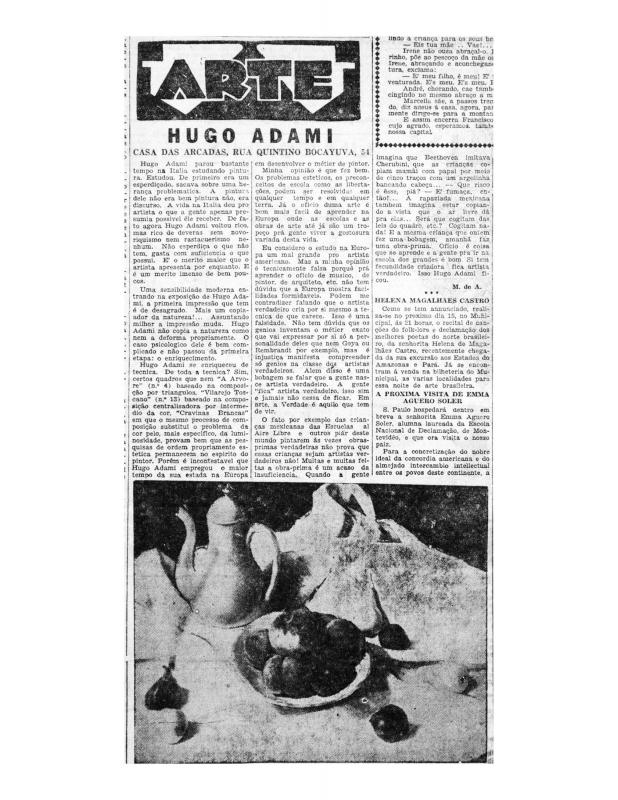A heterogeneous group of painters, artists, and intellectuals joined forces in 1935 to create the Grupo Almeida Júnior in honor of a famous late-nineteenth-century Brazilian painter. The group’s members were: Anita Malfatti (1889–1964), Georgina de Albuquerque (1885−1962), Lucy Ferreira (1911−2008), Tulio Mugnaini (1895–1975), José Wasth Rodrigues (1891−1957), Alfredo Volpi (1896–1988), Virgílio Maurício (1892−1937), Antonio Pádua Dutra (1906–39), Orlando Tarquino (1894−1970), Gino Bruno (1899–1977), Humberto Cozzo (1900−81), Francisco Leopoldo e Silva (1879−1948), Ottone Zorlini (1891–1967), and João Batista Ferri (1896−1978). The following year (at Volpi’s invitation) they were joined by members of the FAP (Família Artística Paulista) and the Grupo Santa Helena, whose members were mainly Italian immigrants —Aldo Bonadei (1906–74), Franco Cenni (1909–73), Fúlvio Pennacchi (1905−92), Humberto Rosa (1908–48), Vittorio Gobbis (1894–1968), Mário Zanini (1907–71), Paulo Rossi Osir (1890–1959), and Armando Balloni (1901–69)—with the exception of Francisco Rebolo González (1902−80) who was from Spain.
José Ferraz de Almeida Júnior (1850−99) painted landscapes and scenes of everyday life in the rural area where he was born, in Itu, in the state of São Paulo. His works show the influence of French realism; his palette of luminous colors and free brushwork reveal his independence from certain aspects of the academic painting that was popular in Brazil until the early twentieth century. Many critics (including the modernist poet Oswald de Andrade) thought that Almeida Júnior was a forerunner of Brazilian modern art.
There is an essay by Mário de Andrade about Hugo Adami, which establishes a connection between the FAP (Família Artística Paulista) and the Grupo Santa Helena. The essay was written about another exhibition held at the Casa das Arcadas (see “Hugo Adami” [doc. no. 783916]).

